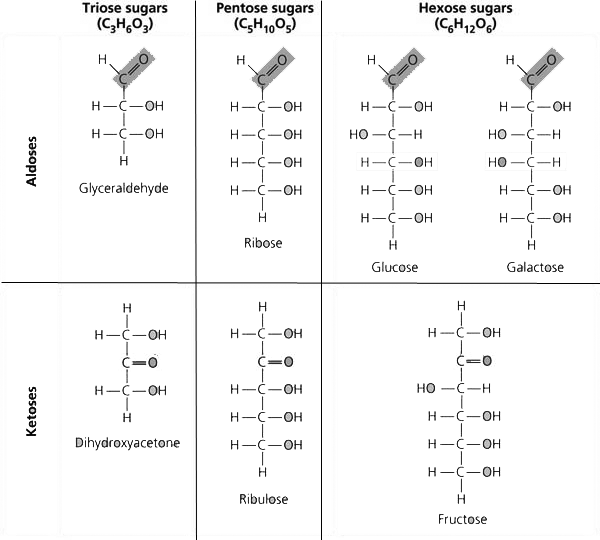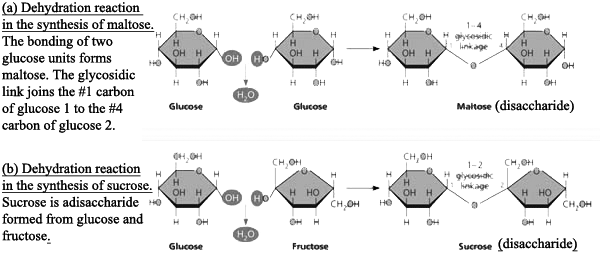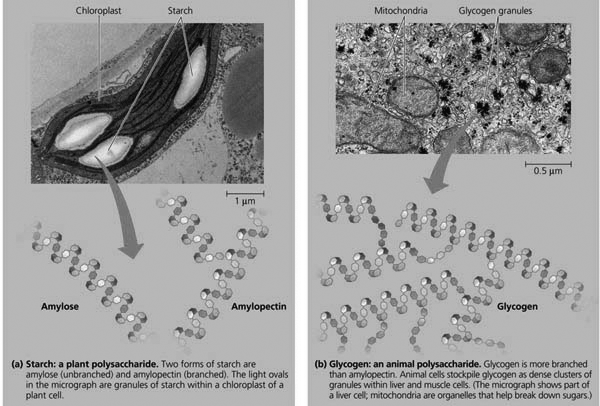
These include both sugars and the polymers of sugars. The simplest carbohydrates are the monosaccharides, or single sugars, also known as simple sugars.
Monosaccharides generally have molecular formulas that are some multiple of the unit CH2O. Glucose (C6H12O6), the most common monosaccharide, is of central importance in the chemistry of life.

The structure and classification of some monosaccharides. Sugars may be aldoses (aldehyde sugars, top row) or ketoses (ketone sugars, bottom row), depending on the location of the carbonyl group. Sugars are also classified according to the length of their carbon skeletons.
A disaccharide consists of two monosaccharides joined by a glycosidic linkage, a covalent bond formed between two monosaccharides by a dehydration reaction.

Polysaccharides are macromolecules, polymers with a few hundred to a few thousand monosaccharides joined by glycosidic linkages. Some polysaccharides serve as storage material, hydrolyzed as needed to provide sugar for cells. Other polysaccharides serve as building material for structures that protect the cell or the whole organism.
Starch, astorage polysaccharide of plants, is a polymer consisting entirely of glucose monomers. Most of these monomers are joined by 1–4 linkages (number 1 carbon to number 4 carbon), like the glucose units in maltose. The angle of these bonds makes the polymer helical. The simplest form of starch, amylose, is unbranched.

Structural Polysaccharides
Organisms build strong materials from structural polysaccharides. For example, the polysaccharide called cellulose is a major component of the tough walls that enclose plant cells.
Another important structural polysaccharide is chitin, the carbohydrate used by arthropods (insects, spiders, crustaceans, and related animals) to build their exoskeletons.
1. Write the formula for a monosaccharide that has three carbons.
Answer: C3H6O3 or C3(H2O)3
2. A dehydration reaction joins two glucose molecules to form maltose. The formula for glucose is C6H12O6. What is the formula for maltose?
Answer: C12H22O11
3. Compare and contrast starch and cellulose.
Answer: Both molecules are polymers of glucose made by plants, but the glucose monomers are arranged differently. Starch functions mainly for sugar storage. Cellulose is a structural polysaccharide that is the main material of plant cell walls.